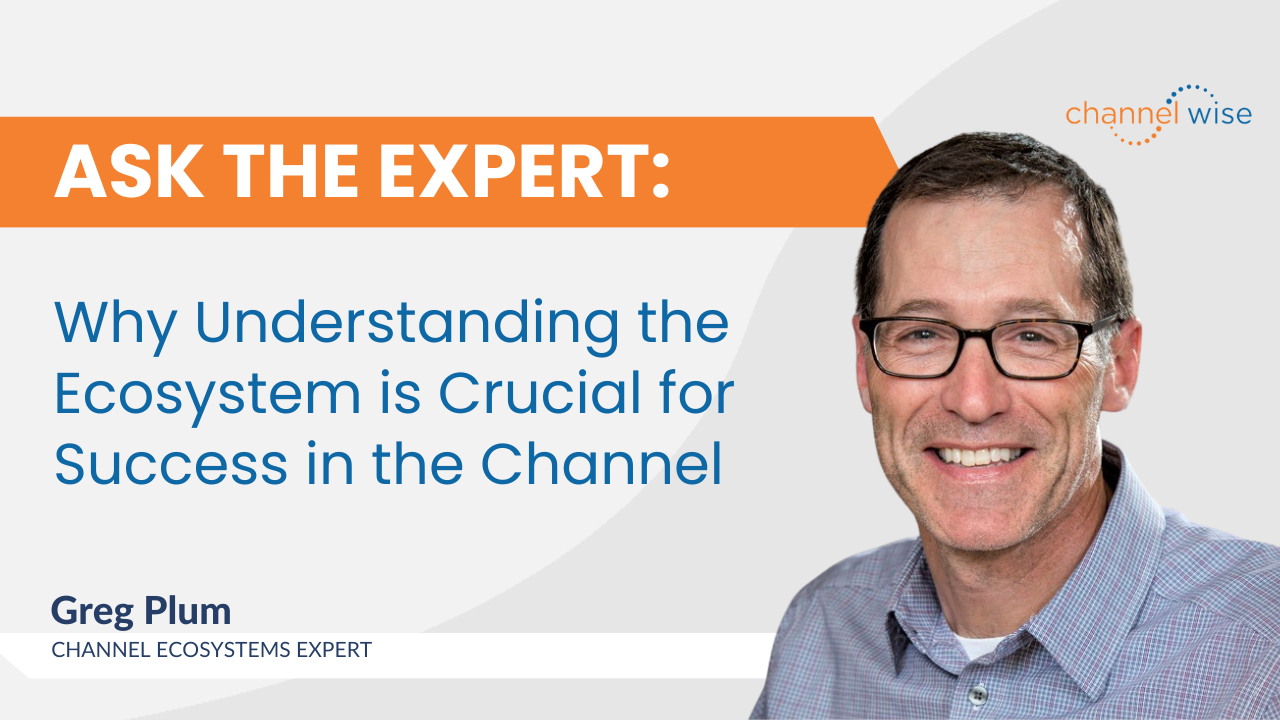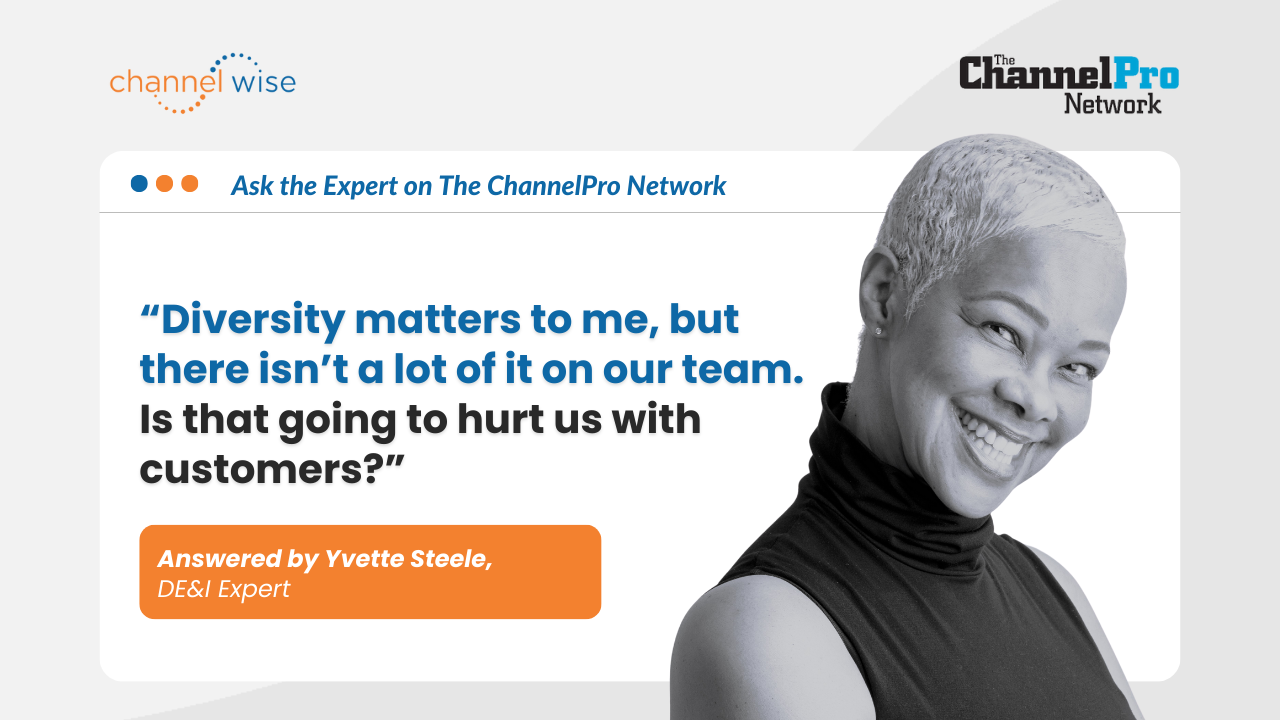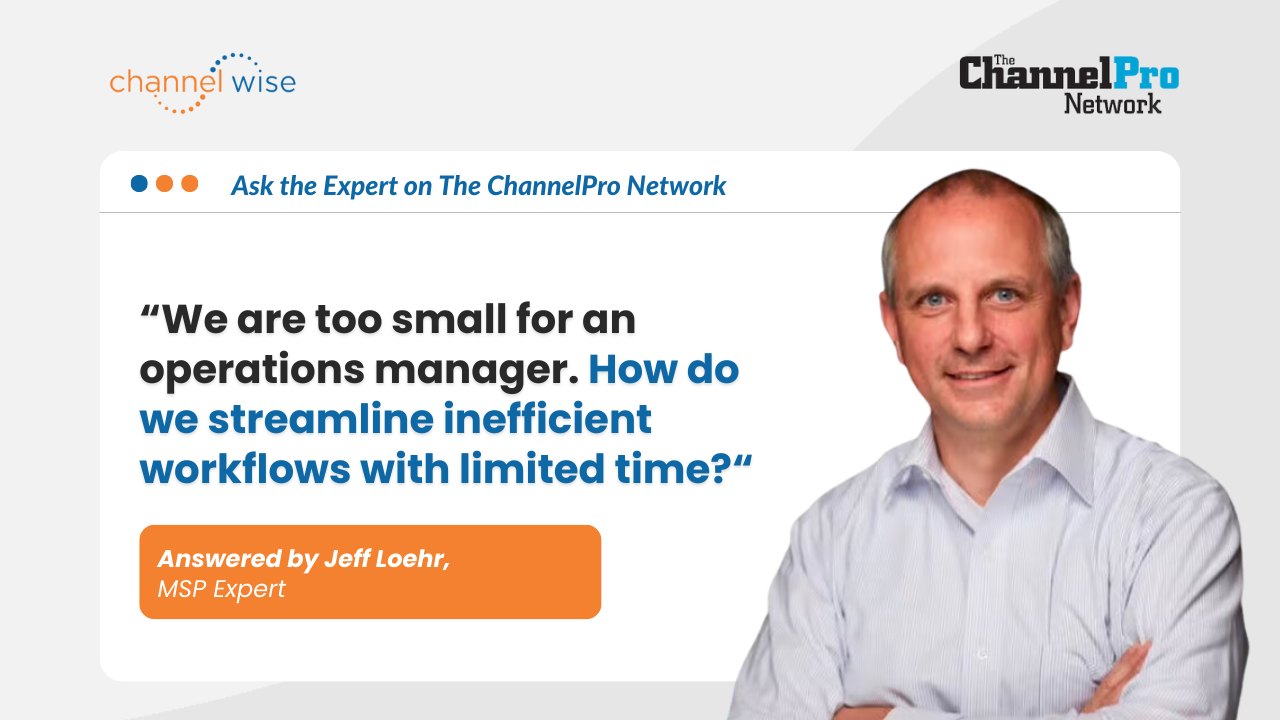Why Understanding the Ecosystem is Crucial for Success in the Channel with Greg Plum
Click here to watch the replay:

In the channel industry, the ecosystem approach has become a buzzword for a good reason. Understanding the network of partnerships and relationships between different players in the industry is crucial for success.
In this Ask the Expert Episode, Kathryn Rose, CEO & Founder of channelWise and Greg Plum, Director of
PartnerReady and
a channelWise expert, explored the importance of the ecosystem, how it relates to the customer journey and the key considerations for vendors' or suppliers when starting a partner program or expanding their channel presence.
Highlights
- The ecosystem approach in the channel industry emphasizes collaboration, co-creation, and mutual success among vendors, distributors, resellers, solution providers, agents, and subagents.
- Understanding the ecosystem is crucial because it encompasses all the different players and relationships that impact the customer.
- To be successful in the ecosystem model, vendors, and suppliers should consider their position in the ecosystem, work with partners to offer comprehensive solutions and services, and create new revenue streams.
What is an ecosystem in the context of the channel industry, and why should people care about it?
The concept of an ecosystem is a new buzzword in the channel industry. It refers to the network of partnerships and relationships between different players in the industry, including vendors, distributors, resellers, solution providers, agents, and subagents. The ecosystem approach is gaining popularity because it emphasizes collaboration, co-creation, and mutual success rather than traditional vendor-to-customer relationships. Ecosystems can enable partners to offer customers more comprehensive solutions and services, create new revenue streams, and differentiate themselves in a crowded market. Therefore, understanding and participating in ecosystems can be crucial for the success of businesses in the channel industry.
What is the importance of understanding the ecosystem in the channel industry, and how does it relate to the customer journey?
Understanding the ecosystem in the channel industry is important because it encompasses all the different players and relationships that impact the customer. Recognizing and leveraging these relationships to offer customers more comprehensive solutions and services, create new revenue streams, and differentiate oneself in the market is crucial. The ecosystem approach also extends the concept of the customer journey beyond just the people inside the company to include potential providers of services that surround the customer.
What steps can partners take to leverage the ecosystem approach and strengthen their position with customers?
Partners should identify their ideal customer profile and ask questions to understand who else is influencing them, such as what they are buying, who they are buying from when they are buying, why they are buying, and how they are buying. Once partners have this information, they can build relationships with other influencers in the ecosystem and work directly with them to strengthen their position with the customer. This approach is more strategic and complex than the traditional one-to-one relationship between a partner and a customer. Therefore, partners must understand their value proposition and how it complements and influences other parts of the ecosystem.
What are the key considerations for vendors or suppliers when starting a partner program or expanding their channel presence in the ecosystem?
When starting a partner program or expanding your channel presence, recognize that you are just one piece of the solution in the ecosystem. You must be strategic and patient and ask many questions to understand what you want to achieve and how to do it effectively. Building a partner program can take around 18 months to see any movement of the needle, so you must be prepared for this long-term investment.
To be successful in the ecosystem model, consider your position in the ecosystem and understand the power of relationships and partnerships within it. You should work with partners to offer customers more comprehensive solutions and services and create new revenue streams.
What are the trends in channel and ecosystem management in the next 2-5 years?
The trends in channel and ecosystem management include the growing importance of technology distributors, leveraging systems and data, and the impact of the pandemic on remote communication. The strength of technology distributors, such as the likes of Avant and Intel, is expected to grow. The relationship is still crucial, but data is becoming more critical for business growth. The pandemic has made remote communication more efficient, but face-to-face interaction is essential for building relationships.
For more advice about the channel ecosystem, visit Greg’s profile on
channelwise.
Check out channelWise.com for more experts to help you with your business or career.
Note: Transcript is edited for time and clarity.







Contact Us
All Rights Reserved | wiseHer, Inc. d/b/a channelWise
